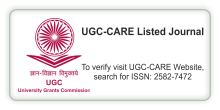CULTURAL TOURISM AND WELL-BEING OF LOCAL POPULATION IN SIKKIM
DOI:
https://doi.org/10.29121/shodhkosh.v5.i3.2024.3016Keywords:
Cultural Tourism, Local Well-Being, Sikkim, Sustainable Practices, Community InvolvementAbstract [English]
This study explores the impact of cultural tourism on the well-being of local populations in Sikkim, India. It highlights the dual nature of cultural tourism, emphasizing both its potential benefits and challenges. Key findings indicate that cultural tourism can enhance residents' well-being through economic opportunities, social cohesion, and the preservation of cultural heritage, exemplified by events like the Losar Festival. However, issues such as over-tourism and cultural commodification pose significant risks. The study emphasizes the importance of sustainable tourism practices, community involvement in planning, and policies that prioritize local interests to ensure equitable benefits. By focusing on local well-being, Sikkim can develop a tourism model that not only attracts visitors but also enriches the lives of its residents, preserving its unique cultural identity for future generations. The findings underscore the necessity of balancing tourism growth with the preservation of cultural heritage and the enhancement of local quality of life.
References
Pradhan, P. (2016). Culture and Tourism: A Study of Sikkim (Doctoral dissertation, Sikkim University).
Cajee, L. (2014). Eco-cultural tourism: a tool for environmental, cultural and economic sustainability (a case study of Darap Village, West Sikkim). In SHS Web of Conferences (Vol. 12, p. 01029). EDP Sciences. DOI: https://doi.org/10.1051/shsconf/20141201029
Das, S. (2019). Towards the Development of Sustainable Tourism in Sikkim, India: Issues and Challenges. International Journal of Research in Social Sciences, 9(2), 575-592.
Chandel, N., Dutta, K., & Bhujel, P. R. (2024). Eco-Tourism as a Driver for Sustainable Regional Development Amidst Climate Change Realities in the Eastern Himalayas: A Study of Sikkim in India. In Climate Change and Regional Socio-Economic Systems in the Global South: Resilience Strategies for Sustainable Development (pp. 373-394). Singapore: Springer Nature Singapore.
Chaudhary, M., & Lama, R. (2014). Community based tourism development in Sikkim of India—A study of Darap and Pastanga villages. Transnational Corporations Review, 6(3), 228-237. DOI: https://doi.org/10.5148/tncr.2014.6302
Chaudhuri, S. K., Maiti, S., & Lepcha, C. K. (Eds.). (2020). The Cultural Heritage of Sikkim. Routledge. DOI: https://doi.org/10.4324/9781003052487
Chandel, N., Dutta, K., & Bhujel, P. R. Himalayas: A Study of Sikkim in India. Climate Change and Regional Socio-Economic Systems in the Global South: Resilience Strategies for Sustainable Development, 373.
Chandel, N., Dutta, K., & Bhujel, P. R. (2024). Eco-Tourism as a Driver for Sustainable Regional Development Amidst Climate Change Realities in the Eastern Himalayas: A Study of Sikkim in India. In Climate Change and Regional Socio-Economic Systems in the Global South: Resilience Strategies for Sustainable Development (pp. 373-394). Singapore: Springer Nature Singapore. DOI: https://doi.org/10.1007/978-981-97-3870-0_18
Sattar, S. (2013). Potential of tourism in poverty alleviation and development of Sikkim. IASSI-Quarterly, 32(3), 74-87.
Downloads
Published
How to Cite
Issue
Section
License
Copyright (c) 2024 Dr. Sonam Tshering Bhutia

This work is licensed under a Creative Commons Attribution 4.0 International License.
With the licence CC-BY, authors retain the copyright, allowing anyone to download, reuse, re-print, modify, distribute, and/or copy their contribution. The work must be properly attributed to its author.
It is not necessary to ask for further permission from the author or journal board.
This journal provides immediate open access to its content on the principle that making research freely available to the public supports a greater global exchange of knowledge.































